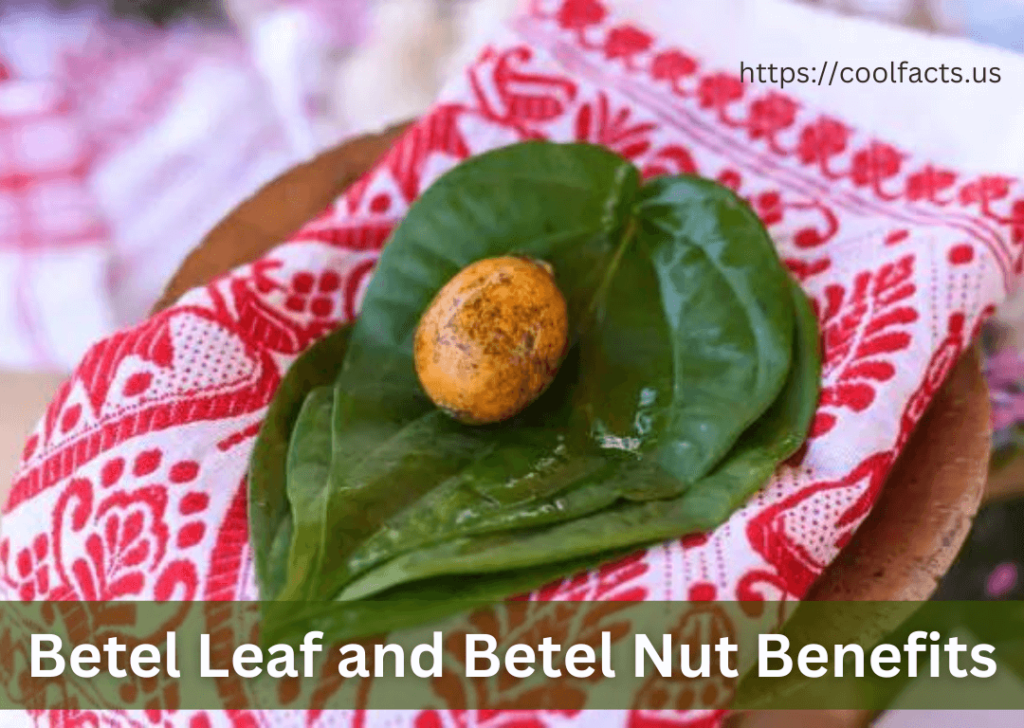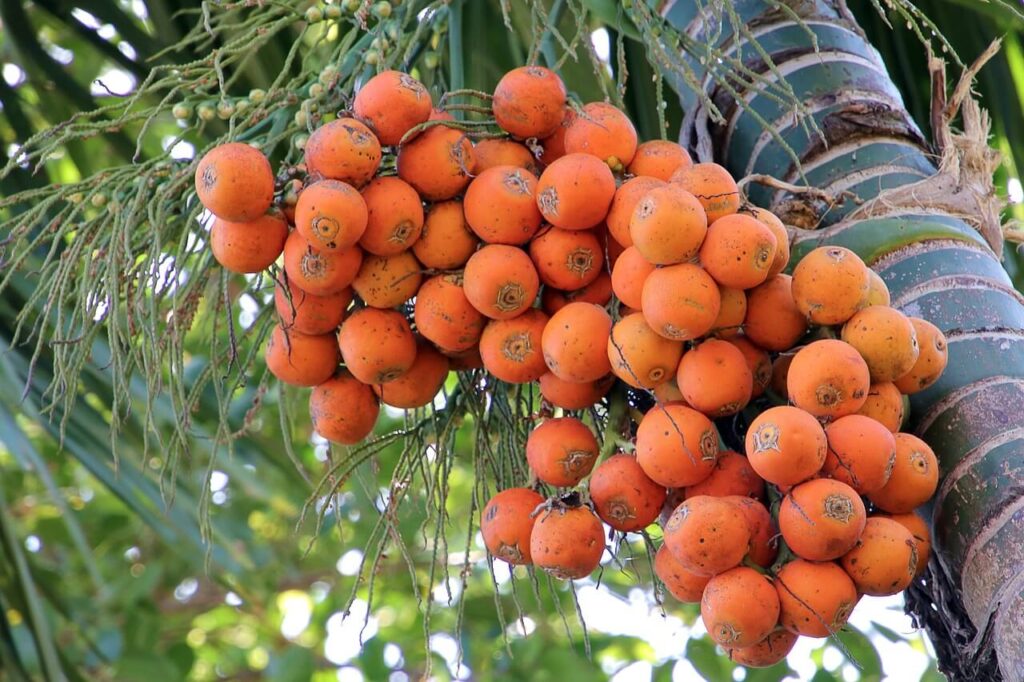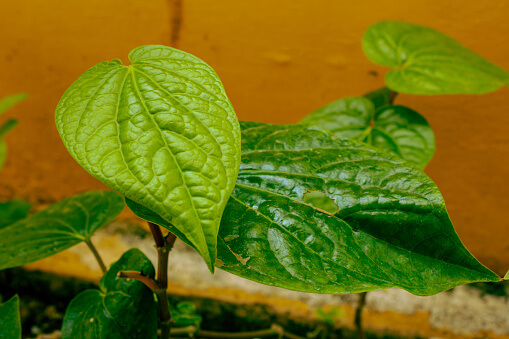Betel leaf and betel nut, commonly referred to as paan, have been integral parts of cultural and traditional practices in various parts of the world for centuries. Originating from Southeast Asia, these natural ingredients hold significant importance not only in rituals and ceremonies but also in traditional medicine and culinary applications.

Nutritional Composition
Betel leaves and betel nuts boast a rich nutritional profile, containing essential vitamins and minerals crucial for maintaining overall health. Betel leaves are a good source of vitamin C, thiamine, niacin, riboflavin, and carotene, while betel nuts are rich in carbohydrates, proteins, and fats. Additionally, they contain calcium, phosphorus, and iron, making them valuable dietary additions.
Health Benefits of Betel Leaves
Digestive Aid
Betel leaves are known for their digestive properties, aiding in digestion and alleviating gastrointestinal discomfort. Chewing betel leaves after meals is a common practice in many cultures to promote digestion and relieve bloating.
Oral Health Benefits
The antimicrobial properties of betel leaves contribute to oral hygiene by preventing bacterial growth in the mouth. Chewing betel leaves is believed to freshen breath, strengthen gums, and prevent dental decay.
Anti-inflammatory Properties
Betel leaves contain compounds with potent anti-inflammatory effects, which can help reduce swelling and inflammation in various parts of the body. They are often used topically to alleviate pain and inflammation caused by conditions such as arthritis and muscle sprains.

Health Benefits of Betel Nuts
Energy Boost
Betel nuts are renowned for their stimulant properties, providing a quick energy boost when consumed. They contain alkaloids such as arecoline, which stimulate the central nervous system, increase alertness, and combat fatigue.
Respiratory Health
In traditional medicine, betel nuts are used to alleviate respiratory ailments such as coughs and asthma. The expectorant properties of betel nuts help loosen phlegm and clear the airways, promoting easier breathing.
Antioxidant Properties
Betel nuts contain antioxidants that help neutralize harmful free radicals in the body, protecting cells from oxidative damage and reducing the risk of chronic diseases such as cancer and heart disease.
Traditional and Cultural Uses
Betel leaves and nuts hold significant cultural and traditional importance in many regions, often used in rituals, ceremonies, and social gatherings. In some cultures, offering betel leaves and nuts is a symbol of hospitality and goodwill.
Rituals and Ceremonies
Betel leaves and nuts play a central role in various religious and cultural rituals, symbolizing purity, prosperity, and auspiciousness. They are commonly offered to guests as a sign of respect and hospitality.
Culinary Applications
Betel leaves are widely used in culinary preparations, imparting a unique flavour and aroma to dishes. They are often used as wrappers for savoury fillings or as ingredients in salads, curries, and chutneys. Betel nuts are sometimes chewed as a palate cleanser after meals or incorporated into traditional desserts and confections.

Potential Risks and Side Effects
While betel leaves and nuts offer numerous health benefits, excessive consumption can pose risks and lead to adverse effects on health.
Oral Health Concerns
Chewing betel nuts, especially when combined with tobacco and other ingredients, can have detrimental effects on oral health, including gum disease, tooth decay, and oral cancer.
Addictive Properties
Betel nuts contain addictive substances such as arecoline, which can lead to dependence and addiction with prolonged use. Regular consumption may also result in withdrawal symptoms upon cessation.
Digestive Issues
Excessive consumption of betel nuts may cause digestive issues such as nausea, vomiting, and diarrhoea. Individuals with gastrointestinal conditions should exercise caution when consuming betel nuts.
Research and Studies
Despite their long history of use, scientific research on the health effects of betel leaves and nuts is ongoing, with studies investigating their potential therapeutic applications and safety profiles.
Scientific Investigations
Recent studies have explored the pharmacological properties of betel leaves and nuts, including their anti-inflammatory, antimicrobial, and antioxidant activities. Researchers are also investigating their potential role in the prevention and treatment of various diseases.
Emerging Findings
Emerging evidence suggests that compounds found in betel leaves and nuts may have neuroprotective effects, potentially offering benefits for cognitive function and brain health. Further research is needed to elucidate their mechanisms of action and clinical implications.
Culinary Uses
In addition to their medicinal and cultural significance, betel leaves and nuts are valued for their culinary versatility, adding flavour and complexity to a wide range of dishes.
Betel Leaf Recipes
Betel leaves are used in both savoury and sweet recipes, lending their distinctly peppery flavour and aromatic notes to dishes such as betel leaf wraps, salads, and desserts.
Culinary Traditions
In many Asian cuisines, betel nuts are incorporated into traditional sweets, snacks, and beverages, adding a crunchy texture and nutty flavour. They are also used as flavourings in dishes such as curries and rice preparations.

Market and Availability
Betel leaves and nuts are readily available in markets and speciality stores in regions where they are cultivated, particularly in Southeast Asia and parts of South Asia. They are also exported to international markets to meet the demand of diaspora communities and enthusiasts worldwide.
Global Distribution
The popularity of betel leaves and nuts extends beyond their countries of origin, with diaspora communities preserving culinary traditions and cultural practices wherever they reside.
Accessibility and Pricing
While betel leaves and nuts are generally affordable and accessible in regions where they are cultivated, their availability may be limited in other parts of the world, leading to higher prices in speciality stores and online markets.
Environmental Impact
The cultivation of betel leaves and nuts has environmental implications, including concerns related to land use, deforestation, and biodiversity loss.
Cultivation Practices
Betel leaf and nut cultivation often involves the use of agrochemicals and intensive farming techniques, leading to soil degradation and environmental pollution. Sustainable farming practices are essential to mitigate these impacts and ensure the long-term viability of betel cultivation.
Sustainability Concerns
The growing demand for betel leaves and nuts, coupled with unsustainable agricultural practices, poses challenges to environmental sustainability. Efforts to promote agroecological approaches and conserve natural habitats are crucial for preserving biodiversity and ecosystem health.
Future Prospects
As interest in traditional and natural remedies continues to grow, betel leaves and nuts are poised to attract attention for their potential health benefits and culinary appeal.
Innovations
Innovative applications of betel leaves and nuts in food, medicine, and wellness products may emerge, offering new opportunities for economic development and cultural exchange.
Research and Development
Further research into the bioactive compounds and therapeutic properties of betel leaves and nuts could lead to the development of novel treatments for various health conditions, contributing to the advancement of medical science.
Conclusion
Betel leaves and nuts have been valued for their cultural, culinary, and medicinal significance for centuries. While they offer a plethora of health benefits and culinary possibilities, their consumption should be moderated to avoid potential risks and side effects. By embracing sustainable practices and supporting ongoing research, we can harness the full potential of betel leaves and nuts for the benefit of future generations.
FAQs (Frequently Asked Questions)
1. Are betel leaves and betel nuts safe to consume?
Betel leaves and nuts can be consumed safely in moderation. However, excessive consumption may lead to health risks, particularly concerning oral health and addiction.
2. Can betel nuts be used as a substitute for other nuts in cooking?
While betel nuts have a distinct flavour and texture, they can be used in culinary preparations as a substitute for other nuts in some recipes. However, their addictive properties should be taken into consideration.
3. How should betel leaves and nuts be stored?
Betel leaves should be stored in a cool, dry place away from direct sunlight to maintain their freshness and flavour. Betel nuts can be stored in an airtight container in a cool, dark place to prevent them from becoming rancid.
4. Are there any traditional rituals or ceremonies associated with betel leaves and nuts?
Yes, betel leaves and nuts are used in various traditional rituals and ceremonies across cultures, symbolizing hospitality, purity, and auspiciousness.
5. What are some alternative uses for betel leaves and nuts?
Apart from culinary and medicinal uses, betel leaves and nuts have cultural significance and are sometimes used in rituals, ceremonies, and social gatherings.